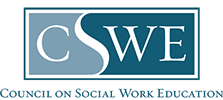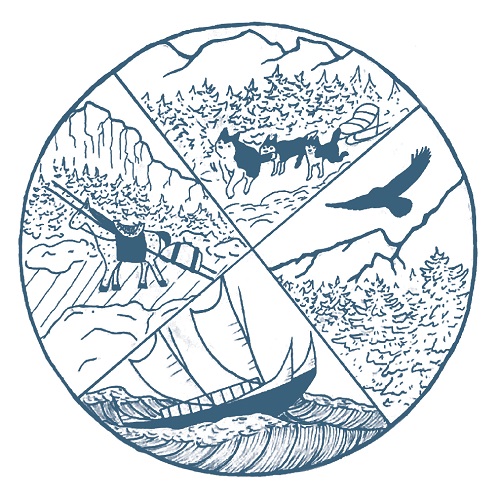
Traveling the Paths Toward our Goals, by Robin Hill (Seneca/Lakota)
Teaching Guide: Repairing Harms Done to Indigenous and Tribal Peoples
Social work educators are ideally positioned to implement the crucial task of repairing, eliminating, and preventing the harms perpetrated against Indigenous and Tribal Peoples. We believe that engaging across education, practice, and policy is essential in repairing past harms, eliminating current ones, and preventing future ones. A major step was taken in 2021 with the development of the Statement of Accountability and Reconciliation for Harms Done to Indigenous and Tribal Peoples by members of the Indigenous and Tribal Social Work Educators Association and its endorsement by CSWE. The accountability statement was developed as an acknowledgment of the harms done to Indigenous and Tribal Peoples by the social work profession. To maximize the usefulness of the accountability statement, they developed a companion teaching guide. The Teaching Guide: Repairing Harms Done to Indigenous and Tribal Peoples(Opens in a new window), the first of this magnitude, is now available online.
The Teaching Guide(Opens in a new window) is based on extensive research and integrates direct applications to social work policy, practice, and research. It offers well-defined activities for educators and provides clear guidance for their use, while leaving room for us to create other activities, meaningful for our specific contexts and classes. The content can be embedded in courses across the curriculum or used as the foundation for a full course. Most of these activities have been developed specifically for this document, although we also find inspiration from educators who have drawn on their dedication and vision for decades to incorporate content on Indigenous and Tribal Peoples in the social work classroom. Key resources are cited at the end of each section.
Activities and Materials in the Teaching Guide
The Teaching Guide integrates pedagogical approaches that aim to engage students through the use of multimedia materials, critical reflection and discussion, collaborative learning, and research for further exploration. The learning materials include, in addition to analytical readings, interactive websites, e-learning modules, archival audiotapes, historical and other documents, recorded interviews, documentaries, and tool kits and other practice guides.
The guide is divided into five sections according to the five themes covered in the accountability statement. The first section, “Indigenous and Tribal Peoples in the United States and Its Territories,” reiterates the diversity of Indigenous and Tribal Peoples emphasized in the accountability statement and provides activities to help social work students learn about the diverse Indigenous and Tribal Peoples in their regions. The Teaching Guide goes on to devote sections to “Child Welfare,” “Health,” and “Research Ethics,” mirroring key content areas of the accountability statement that highlight both historical harms and contemporary concerns in how social workers have interacted with Indigenous and Tribal Peoples. The final section of this teaching guide, “Commitments: Present and Future,” draws on the last section of the accountability statement, where CSWE, on behalf of the larger community of social work educators, made specific commitments to repair past and current harms and prevent future ones.
Indigenous and Tribal Peoples in the United States and Its Territories
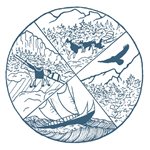 The CSWE Statement of Accountability and Reconciliation for Harms Done to Indigenous and Tribal Peoples includes an overview of different Indigenous and Tribal Peoples in the United States and its territories. There is significant diversity among Indigenous and Tribal Peoples, and it is important that social workers have an understanding of the Indigenous clients they may encounter in their region and not apply generic (often stereotypical) assumptions about them.
The CSWE Statement of Accountability and Reconciliation for Harms Done to Indigenous and Tribal Peoples includes an overview of different Indigenous and Tribal Peoples in the United States and its territories. There is significant diversity among Indigenous and Tribal Peoples, and it is important that social workers have an understanding of the Indigenous clients they may encounter in their region and not apply generic (often stereotypical) assumptions about them.
Teaching and Learning Activities: (1) land and cultural acknowledgment, (2) awareness: “Whose Land?” activity, and (3) population and practice paper: Indigenous clients in the local region and best practices relevant to social work. (Teaching Guide(Opens in a new window), pp. 4–5)
Child Welfare
 The United States recently recognized that the targeting and removal of American Indian, Alaska Native, and Native Hawaiian children through the federal Indian boarding school system was an “intentional,” “traumatic, and violent” means of achieving “the goal of forced assimilation,” and more broadly, “Indian territorial dispossession for the expansion of the United States,” according to the 2022 Federal Indian Boarding School Initiative Investigative Report(Opens in a new window) (p. 93). The Indian boarding school system is connected to current child welfare system involvement in Indigenous/Tribal Peoples’ lives.
The United States recently recognized that the targeting and removal of American Indian, Alaska Native, and Native Hawaiian children through the federal Indian boarding school system was an “intentional,” “traumatic, and violent” means of achieving “the goal of forced assimilation,” and more broadly, “Indian territorial dispossession for the expansion of the United States,” according to the 2022 Federal Indian Boarding School Initiative Investigative Report(Opens in a new window) (p. 93). The Indian boarding school system is connected to current child welfare system involvement in Indigenous/Tribal Peoples’ lives.
Teaching and Learning Activities: (1) Indian Child Welfare Act (ICWA) modules and video, (2) ICWA group discussion and presentation, and (3) ICWA policy and practice paper. (Teaching Guide(Opens in a new window), pp. 6–8)
Health
 The exercises in this section are provided to assist social work educators in teaching about past and current harms to Indigenous and Tribal Peoples with respect to health care and engaging students in supporting Indigenous/Tribal self-determination and culturally congruent approaches to health and wellness. A greater understanding of the past and active engagement across policy and practice levels to achieve social justice in health care can aid reconciliation and prevent future harm.
The exercises in this section are provided to assist social work educators in teaching about past and current harms to Indigenous and Tribal Peoples with respect to health care and engaging students in supporting Indigenous/Tribal self-determination and culturally congruent approaches to health and wellness. A greater understanding of the past and active engagement across policy and practice levels to achieve social justice in health care can aid reconciliation and prevent future harm.
Teaching and Learning Activities: (1) reflective listening: sterilization, (2) mental/behavioral health: group discussion and presentation, (3) Hansen’s disease (leprosy) epidemic: advocacy and practice paper. (Teaching Guide(Opens in a new window), pp. 9–11)
Research Ethics
 The exercises in this section are designed to increase students’ understanding of Indigenous and Tribal values and worldviews regarding research and students’ understanding and respect for Indigenous and Tribal knowledge and the inherent right of Indigenous and Tribal Peoples to exercise ownership, protection, and governance of data about themselves.
The exercises in this section are designed to increase students’ understanding of Indigenous and Tribal values and worldviews regarding research and students’ understanding and respect for Indigenous and Tribal knowledge and the inherent right of Indigenous and Tribal Peoples to exercise ownership, protection, and governance of data about themselves.
Teaching and Learning Activities: (1) research ethics: group discussion and presentation, (2) application of Indigenous/Tribal research ethics to IRB applications, (3) application of Indigenous/Tribal research ethics to research proposals and reports. (Teaching Guide(Opens in a new window), pp. 12–14)
Commitments: Present and Future
 The exercises in this section are designed to increase students’ ability to take actions to “ameliorate the past and current harms [social workers] have caused” to Indigenous and Tribal Peoples as affirmed in the Statement of Accountability and Reconciliation for Harms Done to Indigenous and Tribal Peoples (p. 26).
The exercises in this section are designed to increase students’ ability to take actions to “ameliorate the past and current harms [social workers] have caused” to Indigenous and Tribal Peoples as affirmed in the Statement of Accountability and Reconciliation for Harms Done to Indigenous and Tribal Peoples (p. 26).
Teaching and Learning Activities: (1) sovereignty and self-determination, (2) accountability, (3) inclusion, (4) healing and thriving, and (5) decolonizing. (Teaching Guide(Opens in a new window), pp. 15–18)
Resilience Despite Social, Health, Economic, and Political Inequities
Despite the social, health, economic, and political disparities they experience, Indigenous Peoples demonstrate considerable resilience. Our featured book this month, The Routledge International Handbook of Indigenous Resilience(Opens in a new window), sheds light on the many manifestations of Indigenous resilience: “Cultural, spiritual, and governance traditions remain in some communities and are being revitalized in others to reclaim aspects of their cultures that have been outlawed, suppressed, or undermined.”
Closing the Gap Between Good Intentions and Making a Real Difference
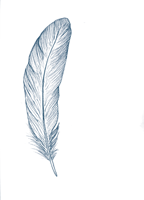 There is tremendous power, potential, and promise inherent in social work education. The CSWE Statement of Accountability and Reconciliation for Harms Done to Indigenous and Tribal Peoples takes an important step in helping us fulfill that promise. Specific commitments were made by CSWE on behalf of the organization and the broader community of social work educators. The accountability statement compiles key information and makes it accessible to social work educators. This teaching guide serves as a companion guide, offering tangible guidance for instructors that will enable us to close the gap between good intentions and making a real difference. Educators are encouraged to build on the activities listed here and create others, which are meaningful for specific contexts and classes. As social work educators, we have the power, potential, and promise to help our profession live up to its value system. We, the authors of this teaching guide, offer these activities to our colleagues in the hopes that they will be useful tools as we educate the next generation of social workers.
There is tremendous power, potential, and promise inherent in social work education. The CSWE Statement of Accountability and Reconciliation for Harms Done to Indigenous and Tribal Peoples takes an important step in helping us fulfill that promise. Specific commitments were made by CSWE on behalf of the organization and the broader community of social work educators. The accountability statement compiles key information and makes it accessible to social work educators. This teaching guide serves as a companion guide, offering tangible guidance for instructors that will enable us to close the gap between good intentions and making a real difference. Educators are encouraged to build on the activities listed here and create others, which are meaningful for specific contexts and classes. As social work educators, we have the power, potential, and promise to help our profession live up to its value system. We, the authors of this teaching guide, offer these activities to our colleagues in the hopes that they will be useful tools as we educate the next generation of social workers.
Authorship
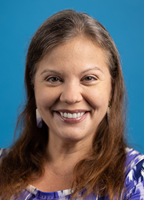
Meschelle Linjean (Cherokee Nation), MSW, is a PhD student in the social welfare program at the State University of New York at Buffalo, which also conferred her MSW. She holds an MA in sociology from New Mexico State University and a BA in anthropology from the University of California, Santa Barbara. Her scholarship focuses on wellness in Indigenous communities, particularly in the areas of Indian child welfare, Indigenous adoptee reconnection, and culture-centered and land-based healing. She is a member of the Indigenous and Tribal Social Work Educators’ Association and recently served on the subcommittee for developing the group’s vision and mission.

Jennifer Russell (Turtle Mountain Band of Chippewa), LBSW, is an MSW student at the University of North Dakota, where she also earned her BSSW. As a graduate research assistant for the Indian Child Welfare Act Partnership Project (IPP), she supported data analysis for an active efforts survey and is partnering with a doctoral student at the University at Buffalo to analyze IPP stakeholder interview data. Her practice interests include improving child welfare and improving the cultural responsiveness of higher education institutions in relation to Indigenous peoples.

Hilary N. Weaver (Lakota), DSW, is professor and associate dean for diversity, equity, and inclusion in the School of Social Work, State University of New York. She earned her BS in social work with a cross-cultural studies focus from Antioch College and her MS and DSW from Columbia University School of Social Work. Her teaching, research, and service focus is on cultural issues in helping processes with a particular focus on Indigenous Peoples. She serves as president of the Indigenous and Tribal Social Work Educators’ Association, board chair of the Council on Social Work Education, and global Indigenous commissioner for the International Federation of Social Workers.
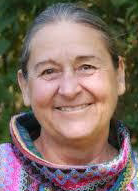
Lacey Sloan (Wahzhazhe [Osage]), PhD, is associate professor and MSW director at Auburn University at Montgomery. She received her BSW from the University of Mississippi and her MSSW and PhD in social work from the University of Texas at Austin. Her intertwining areas of scholarship are social work education and practice in Islamic contexts, sexual rights and gender-based violence, and environmental justice. Using local and Indigenous knowledge and decolonizing practices, she facilitated the development and/or accreditation of multiple MSW and BSW programs. She recently served as president of NASW-Vermont and on the steering committee for developing CSWE’s practice in environmental justice.
Artwork

Robin Hill (Seneca/Lakota) created the artwork for this teaching guide. Robin is a student at the Institute of American Indian Arts and is currently studying studio arts with a focus on illustration.
Acknowledgments
The authors of this teaching guide stand on the shoulders of those who came before us. We acknowledge our Indigenous and Tribal communities and social workers, and our allies, who have shared their wisdom and practice knowledge and set a path for us to follow with respect to preparing social work students to engage with Indigenous and Tribal Peoples. We drew from resources previously created or assembled by these mentors in creating this teaching guide. We especially want to acknowledge Hilary N. Weaver, Lacey Sloan, Carenlee Barkdull, and Pālama Lee, as the authors of the CSWE Statement of Accountability and Reconciliation for Harms Done to Indigenous and Tribal Peoples, and the Indigenous and Tribal Social Work Educators Association, for their longtime and continued dedication to fostering future generations of social work practitioners.
